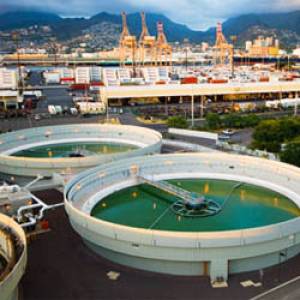Description
Waste Water: Understanding and Managing a Complex Resource
Wastewater, also known as sewage or effluent, is any water that has been contaminated by human use. This encompasses a wide range of sources and compositions, making its effective management crucial for public health and environmental protection. Understanding the complexities of wastewater is essential for individuals, businesses, and municipalities alike.
Composition and Sources:
Wastewater isn't just water; it's a complex mixture of:
- Organic matter: From human waste, food scraps, and other biodegradable materials. This contributes to biochemical oxygen demand (BOD), a key indicator of water pollution.
- Inorganic matter: Minerals, salts, and heavy metals from industrial processes and urban runoff. These can be toxic and persistent pollutants.
- Pathogens: Bacteria, viruses, and parasites that pose serious health risks if untreated wastewater enters water bodies.
- Nutrients: Nitrogen and phosphorus, which contribute to eutrophication – the excessive growth of algae that depletes oxygen and harms aquatic life.
- Pharmaceuticals and personal care products (PPCPs): These emerging contaminants are increasingly recognized for their potential long-term environmental impacts.
- Micro plastics: Tiny plastic particles that are pervasive in our environment and can accumulate in wastewater systems.
Sources of wastewater include:
- Domestic wastewater: From homes, including toilets, sinks, showers, and washing machines.
- Industrial wastewater: From manufacturing plants, often containing specific pollutants depending on the industry.
- Commercial wastewater: From businesses, restaurants, and other commercial establishments.
- Stormwater runoff: Rainfall that flows over surfaces, carrying pollutants from streets, parking lots, and other areas.
Treatment and Management:
Effective wastewater management relies on a multi-faceted approach:
- Collection: A network of pipes and sewers transports wastewater to treatment facilities.
- Treatment: Various treatment methods are employed, including:
- Primary treatment: Physical processes like screening and sedimentation to remove solids.
- Secondary treatment: Biological processes using microorganisms to break down organic matter.
- Tertiary treatment: Advanced processes like filtration, disinfection (e.g., chlorination, UV), and nutrient removal to further improve water quality.
- Disposal: Treated wastewater can be discharged into receiving waters (rivers, lakes, oceans) or reused for irrigation, industrial processes, or groundwater recharge.
- Sludge management: The solid waste produced during treatment requires proper handling and disposal or beneficial reuse.
Challenges and Future Directions:
Wastewater management faces significant challenges, including:
- Aging infrastructure: Many wastewater systems are outdated and require significant investment for upgrades and repairs.
- Population growth and urbanization: Increasing populations place greater strain on existing wastewater systems.
- Climate change: More frequent and intense rainfall events can overwhelm wastewater systems, leading to overflows and pollution.
- Emerging contaminants: Identifying and removing new pollutants requires ongoing research and technological advancements.
- Water scarcity: Reusing treated wastewater can help alleviate water shortages.
The future of wastewater management involves sustainable solutions that minimize environmental impact, promote resource recovery (e.g., energy and nutrients), and ensure public health. This includes exploring innovative technologies, implementing stricter regulations, and promoting public awareness.
